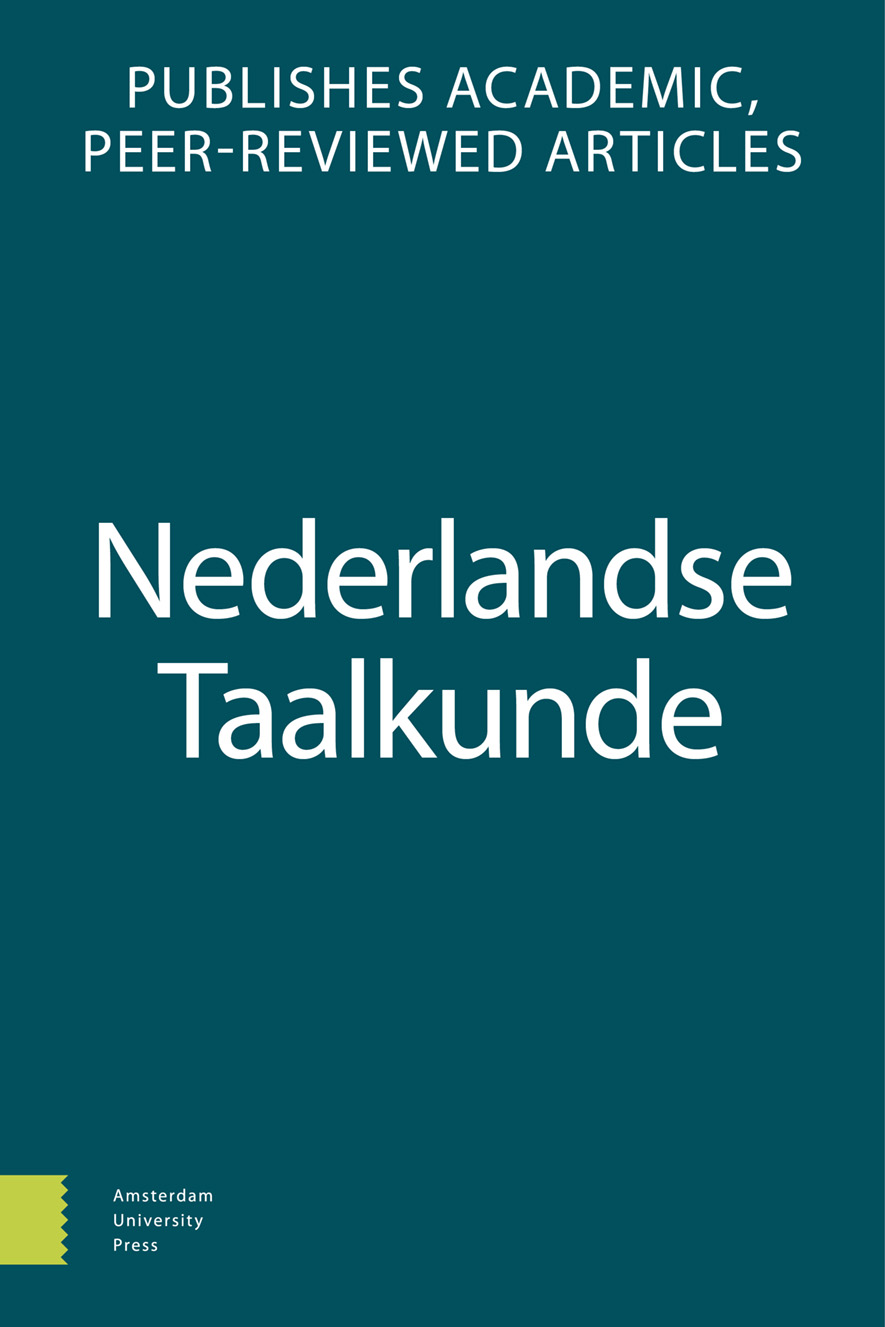-
oa Schaalvergroting in het syntactische alternantieonderzoek
Een nieuwe analyse van het presentatieve er met automatisch gegenereerde predictoren
- Amsterdam University Press
- Source: Nederlandse Taalkunde, Volume 25, Issue 1, Apr 2020, p. 101 - 123
-
- 01 Apr 2020
Abstract
In this paper, we revisit earlier analyses of the distribution of er ‘there’ in adjunct-initial sentences to demonstrate the merits of computational upscaling in syntactic variation research. Contrary to previous studies, in which major semantic and pragmatic predictors (viz. adjunct type, adjunct concreteness, and verb specificity) had to be coded manually, the present study operationalizes these predictors on the basis of distributional analysis: instead of hand-coding for specific semantic classes, we determine the semantic class of the adjunct, verb, and subject automatically by clustering the lexemes in those slots on the basis of their ‘semantic passport’ (as established on the basis of their distributional behaviour in a reference corpus). These clusters are subsequently interpreted as proxies for semantic classes. In addition, the pragmatic factor ‘subject predictability’ is operationalized automatically on the basis of collocational attraction measures, as well as distributional similarity between the other slots and the subject. We demonstrate that the distribution of er can be modelled equally successfully with the automated approach as in manual annotation-based studies. Crucially, the new method replicates our earlier findings that the Netherlandic data are easier to model than the Belgian data, and that lexical collocations play a bigger role in the Netherlandic than in the Belgian data. On a methodological level, the proposed automatization opens up a window of opportunities. Most important is its scalability: it allows for a larger gamut of alternations that can be investigated in one study, and for much larger datasets to represent each alternation.


